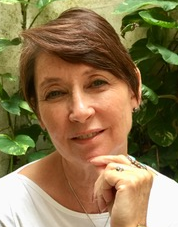An Interview With Author Patricia J. Cutright

Native Women Changing Their Worlds
Native Voices Books
What is a key lesson from your book that higher education administrators should take away?
In an effort to relate values held by institutions, diversity, equity, and inclusivity headline nearly every college and university website and viewbook. It is important that higher education administrators do not allow this phraseology to lapse into three buzzwords that are fashionable today and then fade to obscurity in the future. The key lesson would be recognizing that creating a welcoming community takes more than words on a page. Due to the cultural mores of many BIPOC students, it takes a commitment of dollars, personnel, and even space that demonstrates a true interest and willingness to make your institution a welcoming and successful endeavor for students, faculty, and staff.
How would you like your research and writing to influence the leaders of future generations?
The purpose of writing this book was to illustrate the strength, resilience, and impact Native American women carry in society – in the past and into the future. My hope is two-fold: first, I would like the book to successfully relate to young people that, as Ashley Callingbull from the book states, “You don’t have to be condemned from day one just because you were born on a reserve.” Inspiration gained from stories told can change lives. Secondly, not only do I hope the writing inspires young people to rise above in pursuing their dreams, but also, future generations must provide the leadership that recognizes potential and provides the tools for success, examples being strong mentoring, supporting participation in leadership institutes, and adequate funding of programs that develops leaders.
Several states, such as California and Oregon, have recently introduced legislation to reduce tuition costs for Native American and Indigenous students. In what other ways would you recommend colleges and universities work to reduce barriers for these students?
When a person is brought up in a Native American household, they are exposed to strong familial ties that are ingrained from birth, whether it be the nuclear family or in the broader sense of tribal-extended connections. These ties to home, in addition to the fact that many reservations are in remote locations, make it difficult for students to leave behind familiar settings and travel distances to attend college or university. To successfully matriculate and retain these students, there needs to be a sustained effort to mitigate some of these barriers such as providing peer-to-peer mentoring that helps establish friendships and a sense of belonging, strong academic support as in tutoring, and early alerts for students needing attention, create a space on campus that allows Native students to meet, study, hang out, and practice traditional customs. Ideally, a dedicated space where students can carry out tribal customs such as beading and cooking Native dishes familiar to the students, as the sharing of meals is important in Native culture.
If you were starting the research for your book now, what might you do differently?
I struggled in the beginning with focus and organization. All the women’s stories covered a lifetime of joys and pain that molded them into the person they became, and I wanted to tell it all. What would I do differently? After researching all the chapter subjects, I would establish main themes quicker, which would have focused the writing more expeditiously. Also, I would have become familiar with social media outlets much quicker, as platforms such as Instagram, Facebook, Twitter, and personal websites are often the best way to connect with people.
In our earlier conversations, you mentioned that you collected more material than could be featured in this first book. What is something you learned in your interviews that is not featured in the book that you would want to share with our readers?
While researching the many, many stories on the book’s subjects, as well as the scores of other women considered, there were two topics that ran through many of their stories: 1) the impact of intergenerational trauma from government and/or religious Indian boarding schools and, 2) physical and sexual abuse and the crisis of Murdered and Missing Indigenous Women and Girls. The prevalence of these elements ever present in the lives of Indigenous women needs to be addressed. Reports have shown at least 4 out of 5 American Indian and Alaskan Native women and girls have experienced some form of violence in their lives and in some Native communities the murder rate of women is ten times the national average. Attention must be paid to these issues. Native women are strong and resilient but more needs to be done to provide for the safety and security deserved by all women.
HIRE AN INTERIM
Searching for an Interim?
Please contact us for more information.

